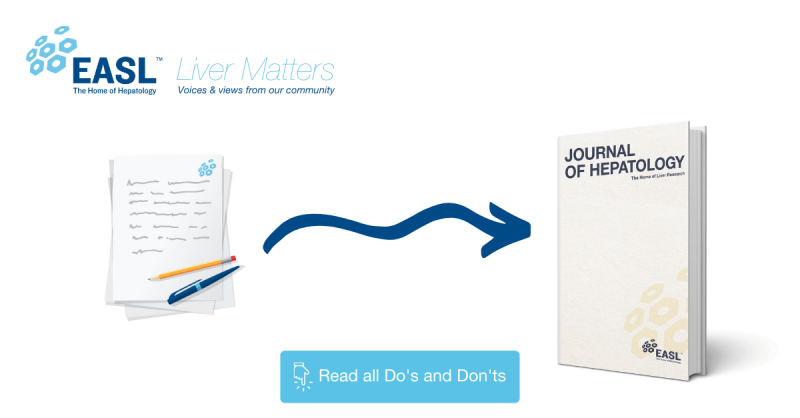Discover the tips & tricks from EASL’s Head of Publications

Submitting your paper to a scientific journal is a highly competitive process. Beyond the initial obstacle course of producing a good piece of research, how will you capture the interest of reviewers?
On 29 April 2021, the EASL Young Investigators Task Force organised its debut webinar on career development. Among the topics covered, Prof. Frank Tacke, co-editor of the Journal of Hepatology, the official journal of EASL with an impact factor of 20.582, presented Do’s and Don’ts that aspiring authors should follow when submitting papers to the Journal of Hepatology. You can find out about his expectancies from a basic science paper in the on-demand webinar available soon on EASL Campus.
Nevertheless, there is no magic recipe for getting your paper accepted by the Journal of Hepatology. Ultimately, it is the quality of your research that will determine whether your manuscript is accepted or not. Potentially good articles can, however, be rejected, if not written or presented adequately. Here are some tips and tricks provided by Joël Walicki, Head of Publications at EASL, to maximise your chances.
Tips
| Convince the editors
In the Journal of Hepatology up to 70% of articles are “desk-rejected”, meaning they are rejected before being peer-reviewed. Convince the editors that your paper is good enough to merit peer review. |
Convince the reviewers
A typical reviewer will devote 2–3 hours to evaluating your manuscript. Make sure that the reviewer can focus on the content and is not distracted by the presentation. |
Familiarise yourself with the journal
You want to avoid mentioning the wrong journal or Editor in Chief in your cover letter (which really happens). Articles that fail to adhere to the journal guidelines can put off editors and reviewers. |
Tricks
| Write a strong cover letter
Make sure that you put your research in context, explaining why your results are important, but don’t overstate conclusions that should be supported by the data. |
Work on the presentation of your manuscript
Make sure your manuscript is easy to read and follows a logical order. Don’t hesitate to have it checked by a native English speaker. Having an effective title and a clear abstract will increase the interest of the reviewer. Well-presented figures are crucial, using colour effectively to help the reader interpret the figures. Attention to detail is crucial. If you are careless when writing your manuscript, readers may infer that you are equally sloppy when performing your experiments. |
Read the guidelines for authors carefully
Make sure that you know what is required at each stage of the evaluation of the manuscript (e.g. first submission vs revision). |
What are your experiences? What are the obstacles you have you faced when submitting papers? Do you have any tips that you would like to share?
Comment below or share this article on Twitter.




Comments (0)